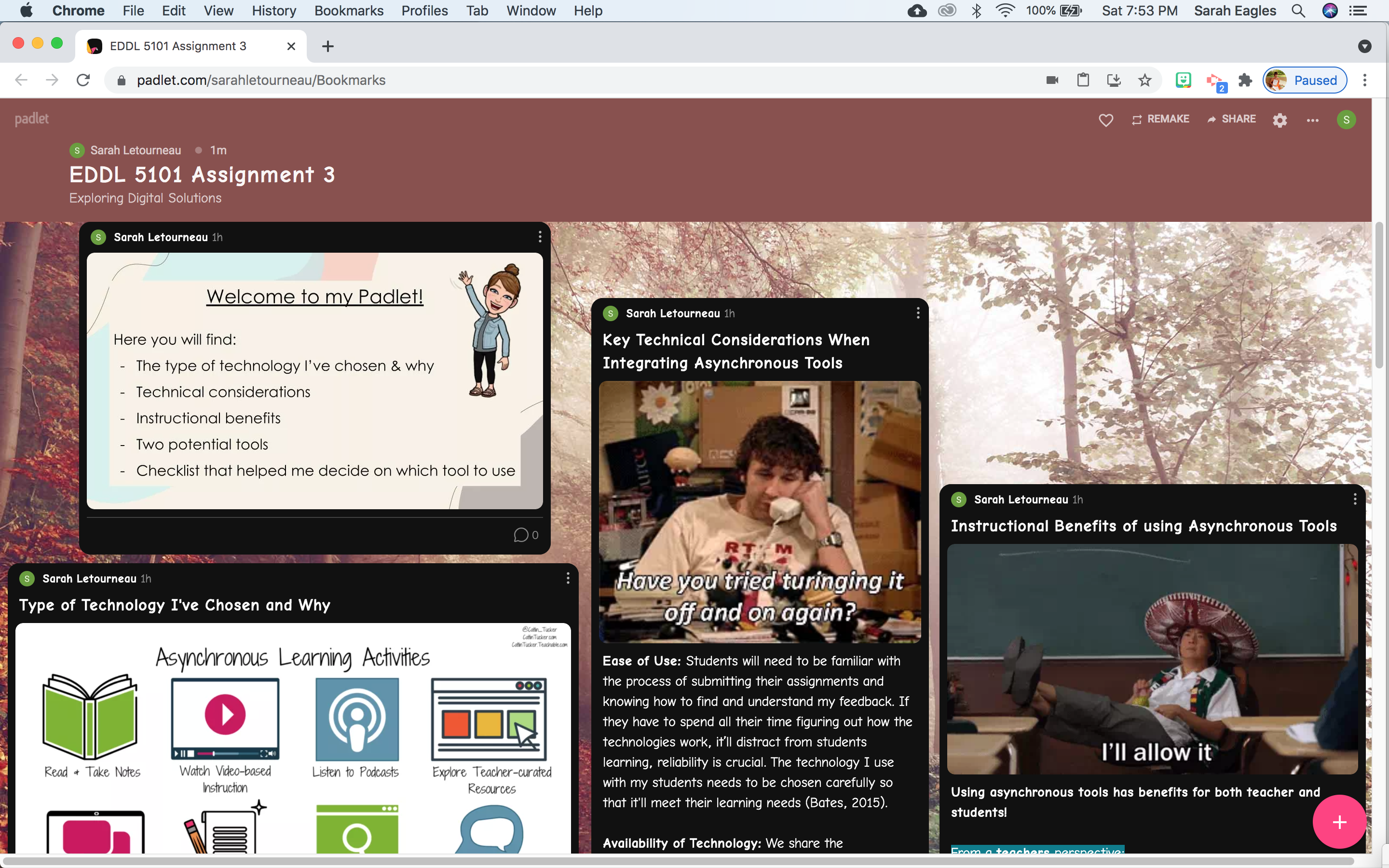The purpose of your PLN.
The purpose of my PLN is to continually find ways to connect and inform my teaching practise through various outlets. I want to look to experts in my field to help guide my teaching practise or direct my personal development.
How you plan to use your PLN.
Sometimes I will use a PLN connection to ‘lurk’ around and see what others are doing in their classroom or teaching practice. Other times I will be more intentional in utilizing a connection through sharing my own classroom experience and asking for feedback or thoughts from other educators. Gone are the days of teachers working in isolation. Collaboration is a must in our profession and having an up to date PLN will achieve that. My PLN will constantly change depending on what grade I teach, the school I’m at, and what stage of life I’m in. I also use my PLN as a way to connect with colleagues who are at different schools.
The platform(s) that you have chosen to start building your PLN.
Google Drive and Instagram are tied for my number one platforms used to build my PLN.
I use Google Drive daily in my teaching practice as it stores all of my lesson ideas, slides, units, everything! It is so easy to share what I’ve made with my colleagues. Over the years I’ve connected with some amazing teachers and they’ve shared their lesson ideas with me as well. I love how easy it is to use and collaborate on projects with colleagues.
I also use Instagram daily. I have my own personal teacher account I use as a portfolio/documentation of what I do with my classes. I’ve found the teacher community on this site very helpful and easy to navigate. Whenever I’m planning a unit I’ll go to instagram and search a hashtag such as, #identityinquiry, and can see all the amazing activities and lesson ideas teachers have done already. It can quickly become overwhelming if you don’t have a topic of interest and you’re just scrolling. I am in need of some cleaning up of who I follow so I can quickly and easily see the content that is relevant to me. I’ve been able to connect with some really amazing educators through Instagram.
The peers, experts, and/or organizations that you have already added to your PLN.
Google Drive tools (collaboration & sharing with colleagues)
Instagram:
@tntmackenzie Trevor Mackenzie’s book, Inquiry Mindset, completely changed how I teach. He posts about how other schools around the world teach through the lens of inquiry and also shares different provocation ideas he discovers.
@inquiryteacher She has been my number one go to teacher for discovering inquiry and provocation activities to do with my class.
@aprimarykindoflife She is my go to for personalizing Google Drive tools and also learning new technology tools I can use in the classroom.
@readingpowergear I’ve had the pleasure of working with Adrienne Gear and my district’s Instructional Leadership Team during a year long Writing Power workshop. It’s been a joy to follow her as she regularly posts new books to check out online professional development opportunities.
SD23 Indigenous Resource Menu
- This has been created for our district and collates Indigenous resources organized by topic ready for us to use.
BC Curriculum
Strategies that you have used, and that others can use, to start building your/their own PLNs.
Strategies for developing your PLN
- Have a purpose
- Before you begin, think about what your goals are and the experts you need to get in touch with or follow on social media.
- Start small
- In regards to Instagram, choose to follow 10 people or organizations, rather than everyone who uses the hashtag #inquiry. You will quickly get overwhelmed.
- Share & participate
- Once you’ve defined your purpose and are following experts in that field it’s time to share your own knowledge with that community. I can be a little nerve wracking sharing your experiences. But even if you’re just beginning in your journey you still have a different point of view than anyone else. It’s so important to share and engage with others in education.
Strategies for maintaining your PLN
- Stop network fatigue
- You don’t want this to just be another thing you have to add to your plate. Be smart when you set aside time to engage in your connections. Staring at a computer screen, tablet or phone can be exhausting so be specific in what you’re looking up and wanting to learn about.
- FOMO is real
- This was a huge issue for me when I first started using Instagram as a teaching resource. There is an enormous amount of teacher accounts that have absolutely beautiful lesson ideas, resources and classrooms. I started to feel inadequate and like I needed to see every single post to keep up. I was spending way too much time on my phone. You need to acknowledge that you won’t have time to see everything and that’s okay. Schedule a certain amount of time you’ll engage with social media and then log out.
- Be careful of overgrown networks
- Starting out in a new network it’s easy to overgrow who you’re following as you’re so excited and adding anything that might serve your teaching practice. Take time to go through who you’re following and clear out your list if you need to.
Reference:
US Department of State, The Bureau of Educational and Cultural Affairs, American English. (n.d.). Developing your virtual personal learning network (PLN). Retrieved from https://americanenglish.state.gov/resources/teachers-corner-personal-learning-networks-plns
US Department of State, The Bureau of Educational and Cultural Affairs, American English. (n.d.). Maintaining your virtual personal learning network (PLN). Retrieved from https://americanenglish.state.gov/resources/teachers-corner-personal-learning-networks-plns



